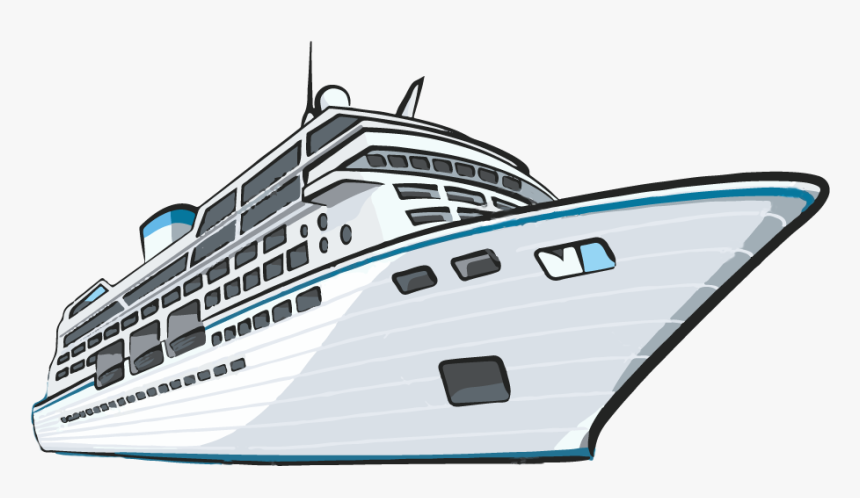CRUISE LINES READY TO SET SAIL AFTER THE PANDEMIC – WITH CHANGES
HTLibrary | May 01, 2020 | Comments 0
Cruise lines look forward to the day when ships will sail again, but after the pandemic, the voyages will be different. Some experts even agree that COVID-19 might have changed the rules forever.

As of now, there is no set date for the industry to resume activities. At first, most believed that it would last one or two months, but for now, the large companies expect that operations will resume in June, although the decision solely depends on the governments of each country.
Shorter Trips
One of the immediate consequences is that trips will be shorter, mostly because the reopening of ports won’t be the same in all countries. It is likely that some European countries might happen to agree on dates, but while in the Mediterranean ships sail to places such as the Caribbean, ports may remain closed longer.
Companies like Norwegian Cruise Line announced that one of their ships, the Norwegian Sun, will be based in Port Canaveral, Florida for short trips of 3 to 5 days instead of the 12-day cruise along the coast of Canada and Alaska, which was its original route.
Passenger Control
In the No Sail order issued by the Centers for Disease Control and Prevention (CDC), prohibiting cruise ship activity in the United States, it was specified that companies should implement new security measures to avoid the spread.
After the pandemic, cruise lines will carry out regular health checks on passengers, although coming up with methods to do it quickly while boarding and disembarking will be a challenge.
It is expected that cleaning and disinfection processes will be more frequent and that there will be hand sanitizer at the entrance of restaurants and bars, as well as attractions and other common areas.
Additionally, cruise lines will perhaps require travelers aged over 70 to show medical exams showing that they are COVID-19 free and in good health for the trip. These exams will also have to comply with the requirements of ports visited in the itinerary before allowing the passenger to disembark.
Several companies announced that there will be regular temperature checks on passengers and staff. Some expect an on-site rapid COVID-19 test for passengers like the one announced by Emirates Airlines, which involves a quick blood test that issues results within 10 minutes.
However, it is one thing to implement this for the 300 to 500 passengers of an airplane, and another to run tests on the 5,000 passengers of a mega cruise ship.
Smaller Ships
If a ship cannot book all of its suites and cabins, cruise lines will switch the vessel for a smaller one. Like Carnival, some of the largest companies expect to leave the biggest ships docked, and sail on those with the least capacity.
The lower demand will force companies to postpone plans such as building new cruise ships, but using the older and more polluting ships is not an option.
This way, the industry could rethink its strategy and, instead of designing mega cruise ships for over 5,000 passengers, opt for vessels with capacity fewer than 1,000.
The End of Buffets?
A study by a travel blog The Point Guy suggests that companies should consider changes for some of the customs on board. One example is the cruise ship buffet: instead of having passengers wait in line and touching kitchenware for self-serve, it will be safer to appoint crew members to serve dishes and drinks.
Self-serve buffets will need more involvement from the crew than before, or maybe the popular custom could be suspended for the first months and replaced by traditional restaurant menus, as several hotels are doing. The only problem lies in the fact that this will represent costs for cruise ships as more personnel will be needed.
Cheaper Tickets
The cruise industry will have to make large investments in the first months after the pandemic. The psychological factor is quite important, so the strategies must involve convincing passengers that going on a cruise is safe.
But words and sanitary displays won’t be enough. Passengers will also need to be lured with cheaper rates: some experts expect that cruise ship tickets may drop between 25% and 30% during the first months of reopening.
Other measures being considered are more flexibility for cancellation policies and making paid services complimentary, such as WiFi, which is an important source of income.
Keeping Distance
One of the challenges on cruise ships will be keeping social distancing. For this, companies such as Dream Cruises and Star Cruises announced in advance that restaurants and theaters won’t be booked completely, so seeing empty seats will be part of that measure.
The same might apply to cruise ship tickets in general, so in the near future cruise ships won’t travel at full capacity, which was the engine behind the business. On the one hand, the industry will recover slowly over the months, and it is expected that it will take a couple of years for it to return to previous performance levels.
Still, cruise lines hope to be on the water as soon as possible, no matter the demand, in an effort to show the public that the industry is strong and prepared for what is ahead.
Source: https://www.tourism-review.com/cruise-lines-plan-major-changes-news11501
Filed Under: Tourism
About the Author:
